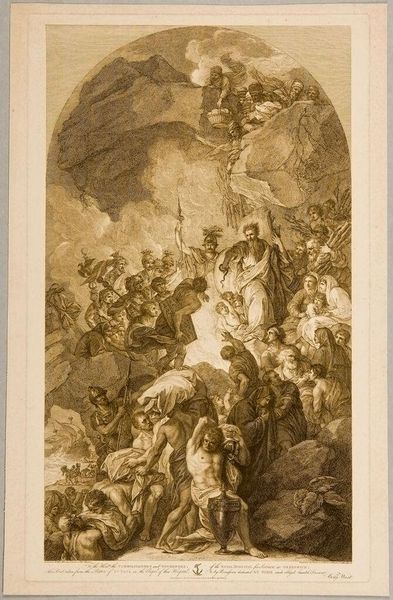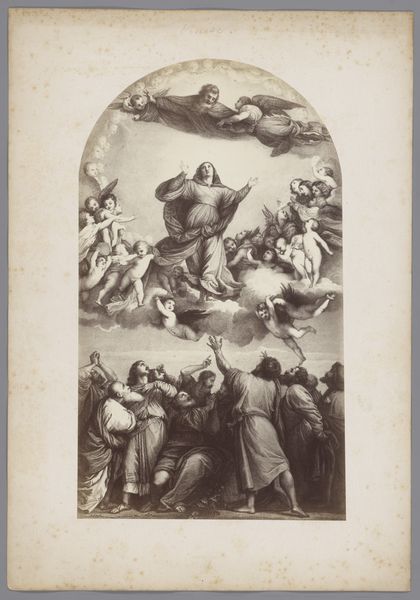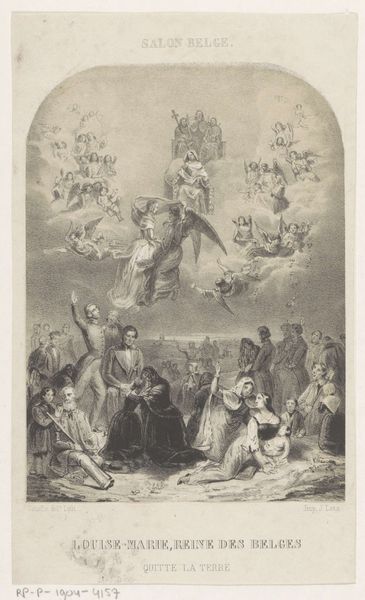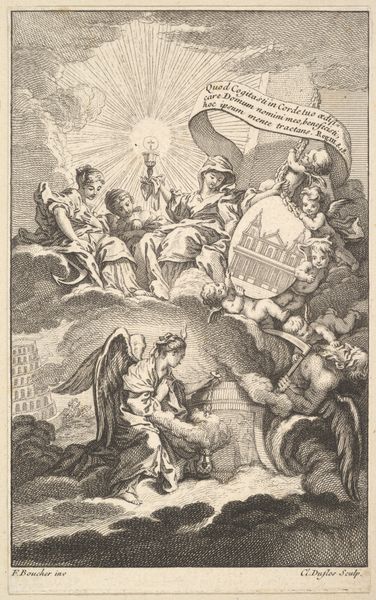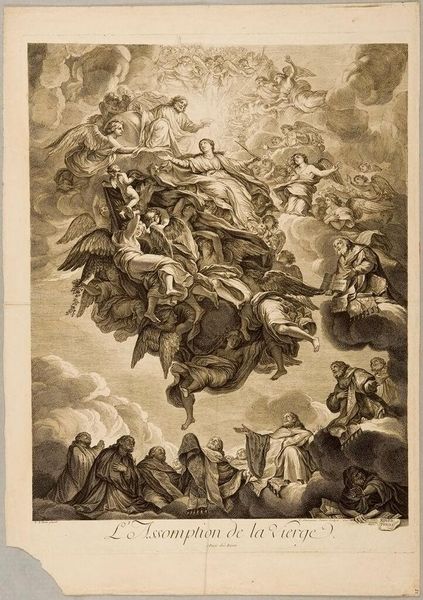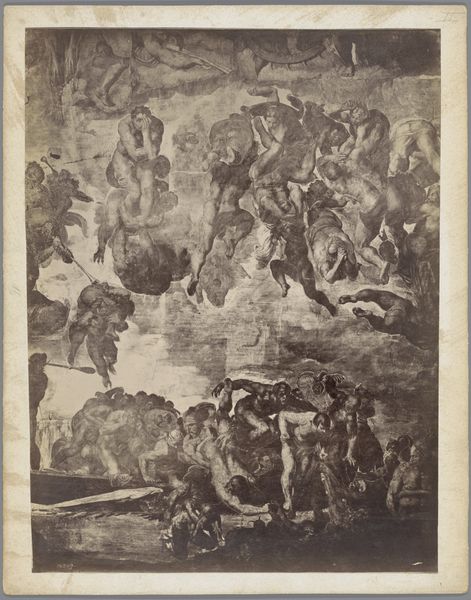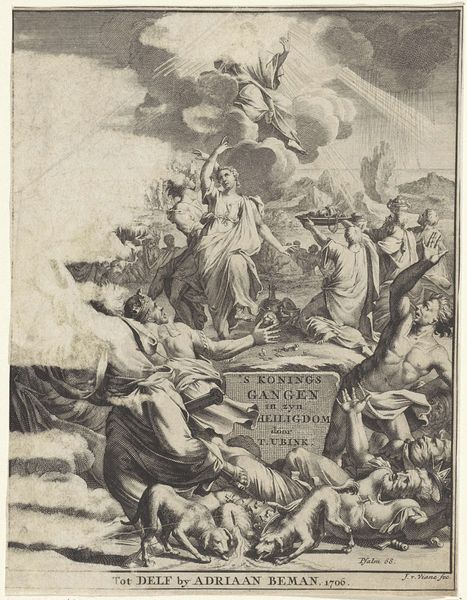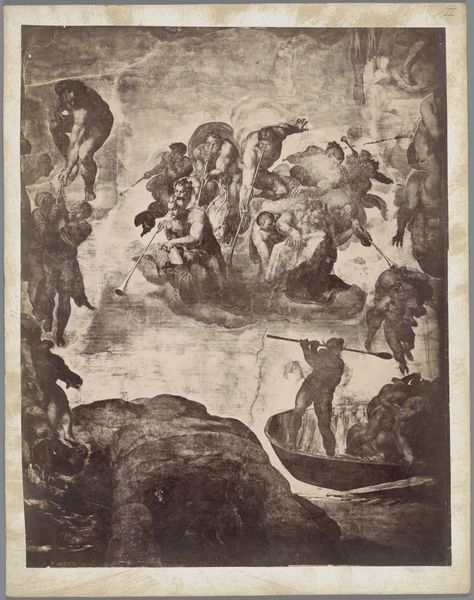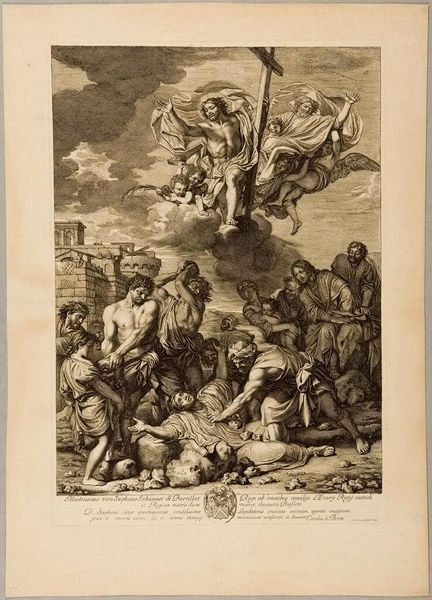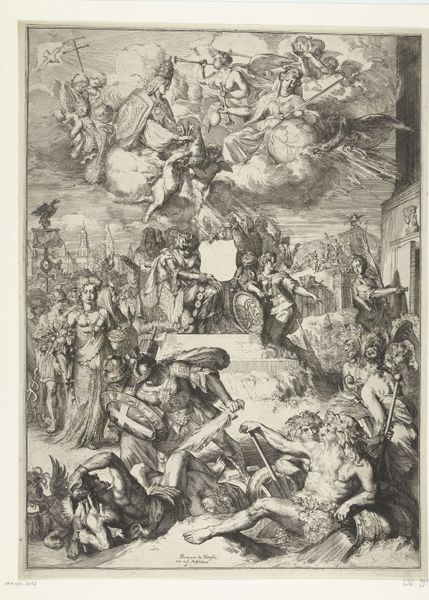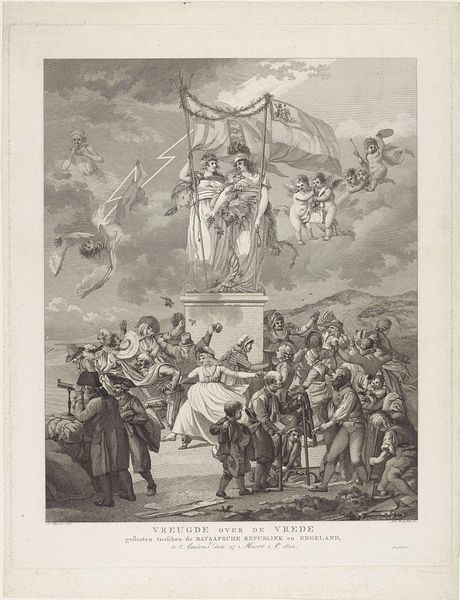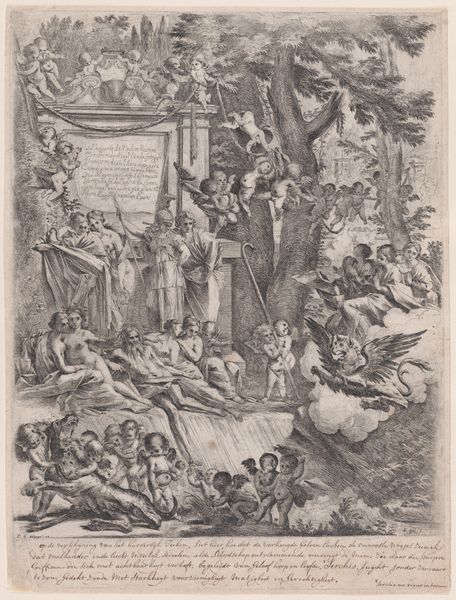
Dimensions: height 101 mm, width 64 mm
Copyright: Rijks Museum: Open Domain
Curator: Welcome. Before us, we see an engraving titled "Willem I, soeverein vorst der Nederlanden, 1814," dating from 1865. It can be found here at the Rijksmuseum. Editor: What immediately strikes me is its rather chaotic yet triumphant composition. The lower half feels crowded, earthy, almost a scene of struggle, contrasting with the ethereal lightness above. The engraving technique also adds to a strong sense of texture throughout. Curator: Indeed. Note the clear division between the terrestrial and celestial realms. Below, we observe figures representing the Dutch people, a collection of social strata, all seemingly reaching upwards toward the central figure of Willem I depicted in the floating oval frame. His portrait is itself encircled by allegorical figures. The imagery seems deeply rooted in Neoclassical ideals. Editor: Absolutely, and considering this was made in 1865, well after Willem I's reign, the imagery and idealized representation is fascinating. What do you make of that implied timeframe? What do you make of this construction and the context surrounding its construction and consumption? It really feels like this print wants us to consider legacy and myth-making. Curator: The engraver's emphasis is less on verisimilitude, that's certainly true, and more on symbolic articulation. The strategic arrangement of light and shadow across the various groups certainly compels one's eye to make connections. From chaos to order. From the earthly to divine... It reinforces this very carefully constructed narrative of Dutch sovereignty restored through Willem I. Editor: And how that sovereignty continues to be idealized. Think about how powerful visual narratives can be when repeated. In what ways would you say it operates on its viewer, and even, ask more of its viewer? Is the contrast simply rhetorical or perhaps more pedagogical? It’s such a carefully posed question of history and spectatorship through a relatively straightforward use of medium. Curator: I see your point. The work leverages these familiar allegorical tropes, but invites closer inspection, if only for one to acknowledge its carefully staged dramatics, if nothing else. Editor: So well-observed. These deliberate aesthetic choices highlight a desire to cement a specific historical narrative, which goes beyond a mere depiction of the man himself. I found myself lost, ultimately, in thinking through the legacy of not simply Willem, but rather how people wish to understand Willem and interpret the broader sense of legacy that came with and after his work. Curator: Thank you. A fitting note to end our observation. It showcases, for us, how careful examination through formal and historical lenses, brings the image alive.
Comments
No comments
Be the first to comment and join the conversation on the ultimate creative platform.

